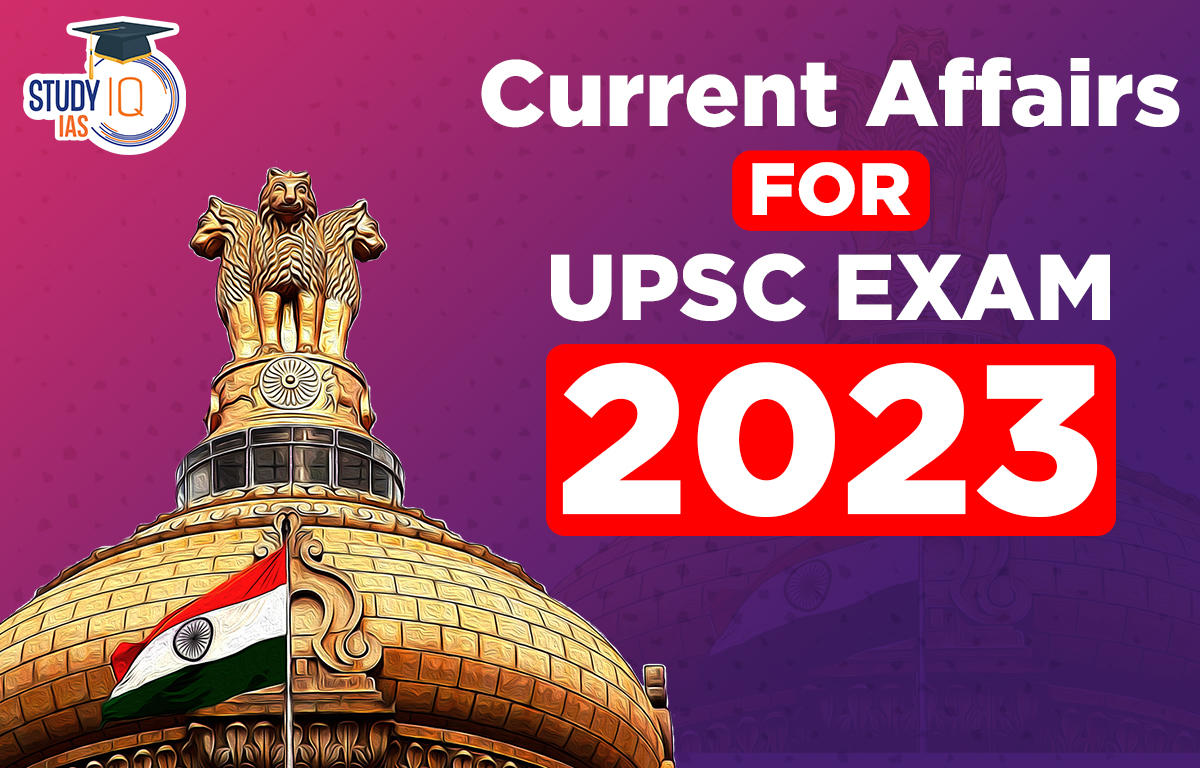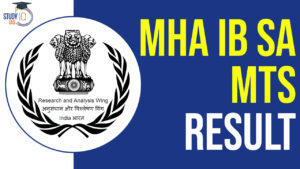Current Affairs 28th March 2023 for UPSC Prelims Exam
Daylight Saving Time
Context:: Lebanon has delayed the start of daylight saving time (DST) by a month.
What is Daylight saving time?
- Daylight saving time (DST) is the practice of setting forward the clocks by one hour from the standard time during the summer and one hour back during autumn.
- Purpose: Daylight saving time is followed to make better use of natural daylight. More work can be done when natural light is available.
- Practice in India: India does not follow this concept as countries near the Equator do not experience high variations in daytime hours between seasons.
- Reasons for adoption: The practice of forwarding the clock was started to minimize the use of artificial lighting and save fuel during World War I.
- Criticism of the practice
- Many have argued that most energy-consuming appliances run at all hours of the day, reducing the impact of such a move.
- Studies have also shown body clock disruptions due to the DST have adverse health effects.

Current Time-Zone in India:
- The Indian Standard Time corresponds to the time schedule along the 82.5°E longitude near Mirzapur in Uttar Pradesh.
- This longitude, named standard meridian, passes through the states of Uttar Pradesh, Madhya Pradesh, Chattisgarh, Odisha, and Andhra Pradesh.
- States located to the west of standard meridian have more daylight hours compared to those in the east.
Chaibagan Time
- The British had introduced the Chaibagan time, which is one hour ahead of IST, in the tea estates, collieries and oil industry of Assam.
Current Affairs 27th March 2023 for UPSC Prelims Exam
Sukanya Samriddhi Scheme (SSS)
Context: Investors in the Sukanya Samriddhi scheme are not expected to get higher returns.
More on the News
- The government is no longer in complete agreement with the Shyamala Gopinath Committee formula that recommended to reset small savings rates every quarter in accordance with the prevailing yields on government bonds of comparable tenures.
- The Gopinath panel’s formula did not consider the fact that the comparable government securities to whose yields small savings rates are linked, were taxable.
- If the recommendations of the committee report were followed, then Sukanya Samriddhi scheme’s returns would have been raised to 8.22% during the October to December quarter.
Sukanya Samriddhi Scheme (SSS)
- Sukanya Samriddhi Yojana is a small saving scheme by Indian Government, which is aimed at the betterment of girl child in India. It was one of the schemes introduced under the Beti Bachao Beti Padhao campaign.
- Under the scheme, an account in the name of the girl child can be opened across any of the private and public sector banks.
- Working: Parents/guardians can invest a minimum of Rs 1,000 and up to Rs 1.5 lakhs every year in this account. The initial minimum deposit must be Rs 250.
- Deposits can only be made for the first 15 years after opening the account, after which the funds will grow from the accumulated compound interest.
- Eligibility: The girl child has to be under 10 years at the time of account opening. The account will be operational till the age of 21.
- One girl can have only one Sukanya Samriddhi Account. Only two Sukanya Samriddhi Yojana accounts can be opened per family.

Drug Resistant TB
Context: Recently, the Indian Patent Office rejected an application by Johnson & Johnson pharmaceutical company to extend its patent on the drug bedaquiline beyond July 2023.
What is Drug-Resistant TB?
- Tuberculosis: TB is a bacterial infection of the bacterium Mycobacterium tuberculosis in the lungs, but often in other organs as well.
- It can be treated by strictly adhering to the doses and frequencies of drugs prescribed by a physician.
- Multidrug-Resistant TB: (MDR TB) is caused by an organism that is resistant to at least isoniazid and rifampin, the two most potent TB drugs. These drugs are used to treat all persons with TB disease.
- A peer-reviewed 2020 study reported that TB becomes isoniazid-resistant when a person doesn’t fully adhere to the treatment regimen whereas rifampicin-resistance emerges due to other factors.
- Extensively Drug Resistant TB: (XDR TB) is a rare type of MDR TB that is resistant to isoniazid and rifampin, plus any fluoroquinolone and at least one of three injectable second-line drugs (i.e., amikacin, kanamycin, or capreomycin).
- Because XDR TB is resistant to the most potent TB drugs, patients are left with treatment options that are much less effective.
- Cases in India: India has the largest population of people living with drug-resistant TB.
- Treatment of MDR-TB: Drug-resistant TB is harder to treat. One important option for those diagnosed with pulmonary MDR TB is bedaquiline.

Sarus Crane
Context: Recently, a man in Uttar Pradesh has been arrested for bringing home an injured Sarus crane.
The Sarus Crane
- Name: Grus antigone Antigone
- Features: The Sarus crane is the tallest flying bird in the world standing 152-156 cm tall with a wingspan of 240cm.
- It has a predominantly grey plumage with a naked red head and upper neck and pale red legs.
- Sarus cranes, like all cranes, are omnivores and feed on aquatic plants such as tubers of sedges, invertebrates, grains, small vertebrates and insects.
- Habitat: The optimal habitat of the bird includes a combination of small seasonal marshes, floodplains, high altitude wetlands, human-altered ponds, fallow and cultivated lands and paddy fields. They are majorly found in:
- Open wetlands in South Asia
- Seasonally flooded Dipterocarpus forests in Southeast Asia and
- Eucalyptus-dominated woodlands and grasslands in Australia.
- Threats:
- Loss and degradation of wetlands, as a result of drainage and conversion to agriculture.
- Ingestion of pesticides.
- The hunting of adults and collection of eggs and chicks for trade, food, medicinal purposes and, in certain areas, to help prevent damage to crops.
- Collision with power lines poses a significant threat in parts of its range.
- Conservation Status: The Sarus crane has been categorised as “vulnerable” under the International Union for Conservation of Nature (IUCN) Red List.
- It is also Listed in Schedule IV of the Wildlife (Protection) Act 1972.

Sticky Inflation
Context: RBI report on sticky inflation has given rise to the possibility of a rate hike.
About Sticky Inflation:
- Sticky inflation is an undesirable economic situation where there is a combination of stubbornly high inflation, (and often stagnant growth).
- Inflation being sticky essentially means that inflation is taking longer than expected to fall.
- Essentially, higher food and fuel prices have seeped into the broader economy and made other things costlier.
- Sticky inflation is often associated with cost-push factors, i.e., factors that cause a rise in the inflation rate but also lead to lower spending and economic growth.
Inflation
- Inflation refers to a sustained increase in the general price level of goods and services in an economy over a period of time.
- It is the rise in the prices of most goods and services of daily or common use, such as food, clothing, housing, recreation, transport, consumer staples, etc.
- Inflation measures the average price change in a basket of commodities and services over time.
Moore’s Law
Context: The businessman and engineer Gordon Moore, on whose name Moore’s law is named, passed away recently.
About Moore’s Law
- Moore’s Law states that the number of transistors on a microchip doubles about every two years, though the cost of computers is halved.
- Moore made that statement based on noticing emerging trends in chip manufacturing, that later became a prediction, eventually becoming the golden rule.
- Utility of Moore’s Law
- It guided the semiconductor industry in long-term planning and setting targets for research and development (R&D).
- Moore’s Law has been a driving force of technological and social change, productivity, and economic growth, during the late 20th and early 21st centuries.
- Moore’s Law current Relevance
- For many years, scale complexity drove Moore’s law and the semiconductor industry’s exponential technology growth.
- As the ability to scale a single chip slows, the industry is finding other methods of innovation to maintain exponential growth.
- The current innovation now is being driven by hyper-connectivity, big data, and artificial intelligence applications thereby finding relevance with Moore’s Law.

Remission
Context: Supreme Court is hearing a petition against the remission of the sentence given to the convicts in Bilkis Bano case.
Background
- Gujarat government had released 11 convicts who were sentenced to life imprisonment for the heinous murder and rape of the complainant during the Gujarat riots of 2002.
- The decision was based on Supreme Court judgment in May 2022. This judgment allowed the State to consider the pleas for early release under the State’s Premature Release Policy of 1992.
- The victim had approached the Supreme Court against the Gujarat government’s grant of remission to 11 convicts.
About Remission
- Remission is releasing a convicted prisoner before the expiry of their sentence. The concept of remission was introduced through the Prisons Act, 1894.
- Constitution: Under Article 72, the President of India has powers to remit a sentence. The power extends to a convict for crimes falling under the central government’s jurisdiction — including court-martial verdicts.
- The governor of a state has powers to grant remission under Article 161. The governor cannot commute death penalty or death penalty commuted to life sentence.
- Criminal Procedure Code (CrPC): Sections 432, 433, 434 and 435 of CrPC have relevant provisions which deal with the powers of the elected government to grant remission.
- The state government can set up a board to consider the remission application of a convict serving a life sentence.
- Section 432 of the CrPC says the state government may seek the opinion of the trial court judge before deciding on remission.
- Section 435 of the CrPC says the state government needs to consult the Centre for deciding a remission application if the prosecuting agency falls under the central government.
- Prisons Act: Under this act, only state governments can frame rules for granting remission. The union government can release non-binding guidelines in this regard.

eVTOL
Context: India is now looking at transitioning into electric vertical take-off and landing (eVTOL) advanced air mobility (AAM) operations to address its regional and urban mobility issues.
About eVTOL
- AAM is an air transportation system that moves people and cargo between short distances, otherwise not served or underserved by aviation using eVTOL.
- eVTOL aircraft is a variety of VTOL aircraft that uses electric power to hover, take off, and land vertically.
- eVTOLs are designed to pick up passengers from rooftops of their apartment blocks to ferry them across the city to their respective offices or entertainment centres.
- Significance: They have close to zero carbon emission. They are also cost effective, and economical, according to the Brazilian plane-maker.
- eVTOL are known as electric air taxi’s.
- Countries like Singapore, UAE, France, Germany, UK and US have already announced their plans to launch these air taxis by 2025.
Potential of eVTOL in India
- India has one of the largest EV markets globally, and eVTOL pioneers hope to build the sectors in tandem with a vision to improve multimodal mobility.
- Presently India has 89 airports with commercial scheduled services, with 558 domestic routes in service.
- India has the potential for 3900 domestic routes between these airports, only a fraction of which are currently served by traditional aviation.
- Study has identified 162 possible routes (up to 240 km) for eVTOL and 2100 for Electric Short Take-Off and Landing (eSTOL) operations.

National Plan for Conservation of Aquatic Eco-systems (NPCA) scheme
Context: MoEF&CC is implementing NPCA Scheme for better conservation and management of Wetland in India.
About National Plan for Conservation of Aquatic Eco-systems (NPCA) scheme
- It is a centrally sponsored scheme under Wetlands Division of Ministry of Environment, Forest & Climate Change (MoEF&CC).
- It was formulated in 2013 by merging of the National Lake Conservation Plan and the National Wetlands Conservation Programme.
- Aim: Holistic conservation and restoration of wetlands for achieving the desired water quality enhancement, besides improvement in biodiversity and ecosystems.
- To promote mainstreaming of wetlands in developmental programming with States by supporting formulation and implementation of integrated management plans, capacity development and research.
- MoEF&CC is currently implementing NPCA scheme on cost sharing basis between Central Government and respective State Governments.
Four- Pronged Approach of Scheme
- Developing baseline information – Wetland Brief Document.
- Rapid assessment of wetlands condition – Wetland Health Card.
- Stakeholder platforms to enable collaborative and participatory management – Wetland Mitras.
- Management planning addressing wetlands’ biodiversity and ecosystem services, values and threats – Wetland Integrated Management Plan.

Wetland
- Wetlands are shallow water-bodies with high biodiversity and productivity. They play an important role in biogeochemical cycles and have the potential for wastewater treatment.
- They are used as a source of drinking water and for navigation, irrigation, improving micro-climate and have ecotourism potential.
- Wetlands are land areas, which are seasonally or permanently flooded with water.


 SSC Stenographer 2024 Notification Out a...
SSC Stenographer 2024 Notification Out a...
 IB SA MTS Final Result 2024 Out at mha.g...
IB SA MTS Final Result 2024 Out at mha.g...
 Model Skill Loan Scheme, Eligibility, Re...
Model Skill Loan Scheme, Eligibility, Re...

















